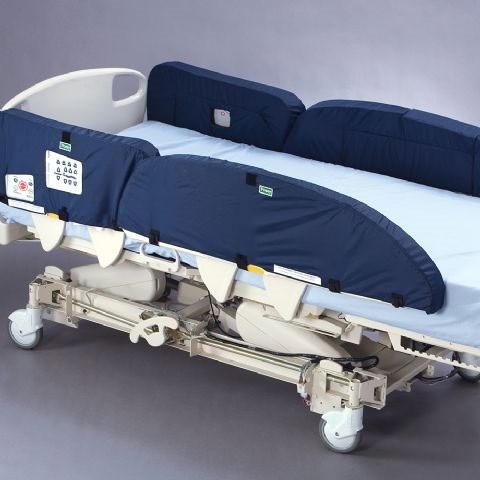A nurse is preparing to admit a client who has bacterial meningitis. Which of the following items should the
nurse place in the client's room?
Oral irrigating device
Seizure pads
Sterile gloves
Tongue blade
The Correct Answer is B
b. Seizure pads
Explanation:
The nurse should place seizure pads in the client's room when admitting a client with bacterial meningitis. Bacterial meningitis is an infection that affects the meninges, the protective membranes covering the brain and spinal cord. It can cause inflammation and swelling of the brain, leading to an increased risk of seizures.
Seizure pads are specifically designed to provide a cushioning and protective barrier between the client's head and the hard surface, reducing the risk of injury during a seizure. They are placed on the bed or matress to help prevent head trauma or other injuries that may occur if a seizure occurs.
Now, let's discuss why the other options are not necessary for the client with bacterial meningitis:
a. Oral irrigating device:
An oral irrigating device is not necessary for a client with bacterial meningitis. Bacterial meningitis primarily affects the central nervous system and does not require oral care interventions. The focus of care for these clients is on managing the infection, monitoring vital signs, and providing supportive care.
c. Sterile gloves:
While sterile gloves are commonly used in healthcare settings, they are not specifically required for the care of a client with bacterial meningitis. Standard precautions, including the use of non-sterile gloves, are sufficient for providing care to these clients. Sterile gloves are typically used for invasive procedures or when there is a need to maintain a sterile field.
d. Tongue blade:
A tongue blade is not necessary for the care of a client with bacterial meningitis. Tongue blades are typically used for oral assessments or when examining the throat, which are not directly related to the management or treatment of bacterial meningitis. The focus of care for these clients is on infection control, monitoring for complications, and providing comfort and support.
In summary, when admitting a client with bacterial meningitis, the nurse should prioritize placing seizure pads in the client's room to ensure their safety during potential seizure activity.

Nursing Test Bank
Naxlex Comprehensive Predictor Exams
Related Questions
Correct Answer is D
No explanation
Correct Answer is C
Explanation
A nurse reviewing the laboratory results of a client who has DKA should identify that the client's ABG results of pH 7.30, PaCO₂ 34 mm Hg and HCO₃ 21 mEq/L indicate metabolic acidosis. Metabolic acidosis is an acid-base imbalance characterized by a low pH (less than 7.35) and a low bicarbonate level (less than 22 mEq/L).
The other options are not correct.
a) Respiratory alkalosisis an acid-base imbalance characterized by a high pH (greater than 7.45) and a low PaCO₂ (less than 35 mm Hg).
b) Metabolic alkalosisis an acid-base imbalance characterized by a high pH (greater than 7.45) and a high bicarbonate level (greater than 26 mEq/L).
d) Respiratory acidosisis an acid-base imbalance characterized by a low pH (less than 7.35) and a high PaCO₂ (greater than 45 mm Hg).
Whether you are a student looking to ace your exams or a practicing nurse seeking to enhance your expertise , our nursing education contents will empower you with the confidence and competence to make a difference in the lives of patients and become a respected leader in the healthcare field.
Visit Naxlex, invest in your future and unlock endless possibilities with our unparalleled nursing education contents today
Report Wrong Answer on the Current Question
Do you disagree with the answer? If yes, what is your expected answer? Explain.
Kindly be descriptive with the issue you are facing.
